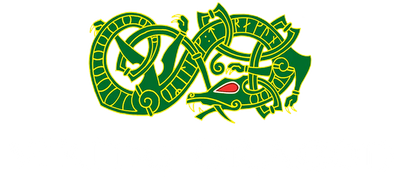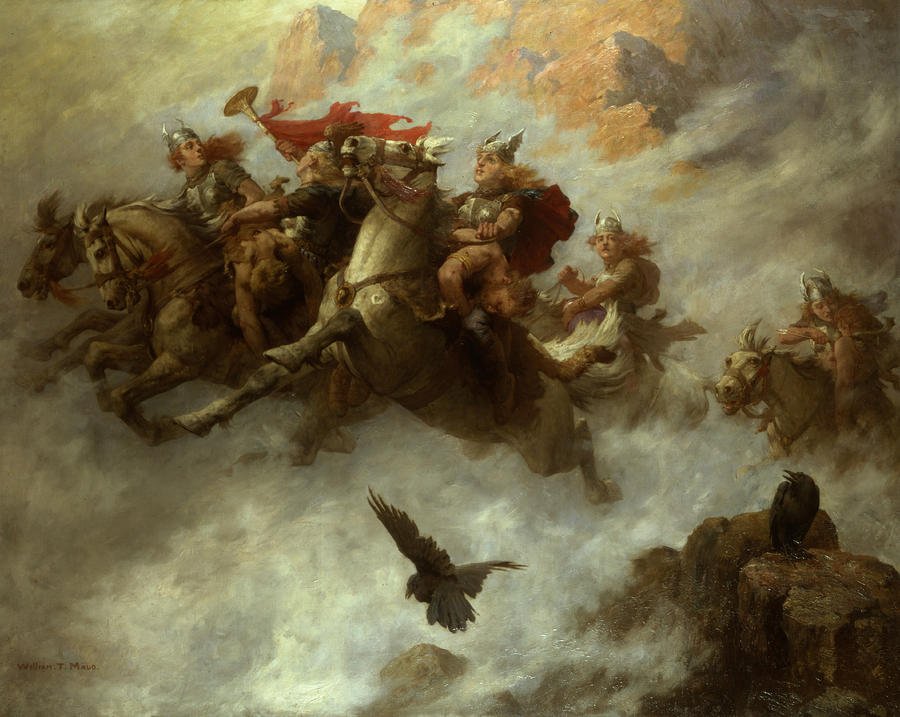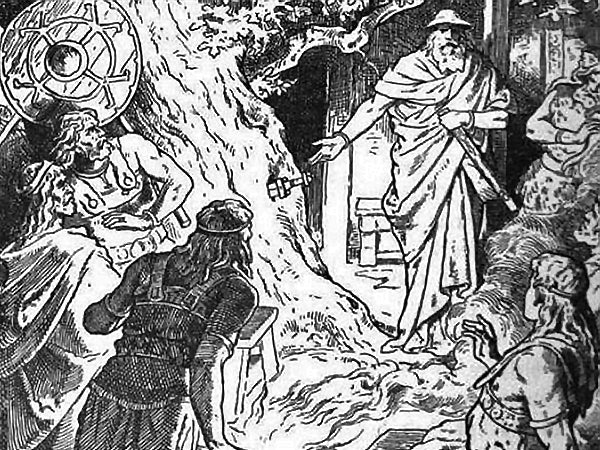An earlier blog post described how the young hero Sigurd killed the dragon Fafnir, who had once been human. Sigurd was egged on to this exploit by his foster-father Regin, who told Sigurd (truly) that Fafnir, Regin’s brother, had killed their father in order to steal his treasure—but failed to mention that Regin had helped in the murder before Fafnir drove him away.

Regin also chose not to tell his foster-son that the treasure included a ring which carried a powerful curse. He had no reason to think that Sigurd needed to know this; Regin hoped that Sigurd and the dragon would kill each other, leaving the treasure to Regin. But Sigurd, helped by Odin’s guidance, survived the encounter. He lived to stand over the dying dragon and heard Fafnir’s last warnings: that the treasure was cursed, and that Regin plotted Sigurd’s death.
When Fafnir breathed his last Regin came and stood over him, muttering, 'My brother is dead, and I am not guiltless'. Sigurd pointing out that Regin had hidden at a safe distance while Sigurd did the dangerous work of dragon-slaying. Regin rep;ied that he had forged the dragon-slaying sword. When Sigurd said that his own courage had mattered more than his blade, Regin dropped the subject, telling Sigurd to cut the dragon’s heart out, roast it over a fire, and call Regin when it was ready to eat. Then Regin lay down and fell into heavy sleep.

Sigurd obeyed. When blood began to bubble from the dragon’s heart he tasted it to see if it was time to wake his foster-father. But as the blood touched his tongue he felt that he understood the twittering of the sparrows in the thicket nearby. He heard them saying that Sigurd was a fool to offer to Regin the dragon’s heart: Sigurd could gain great wisdom by eating the heart himself, and he could best safeguard his own life by killing Regin before Regin could kill him. They also spoke of a woman both wise and beautiful who waited on the hill called the Hindfell for a hero like Sigurd to claim her.

Sigurd did not wonder whether the birds spoke truly or whether the dragon-spell deceived him. He remembered all his Regin’s taunting words driving him to fight Fafnir, and also Regin’s anger when Sigurd pointed out that Regin’s suggested method of dragon-slaying seemed sure to get Sigurd killed. Sigurd killed his foster-father, ate of the dragon’s heart, piled the treasure on his horse’s back, and put on his finger the loveliest thing in the hoard: the shining golden ring that bore Andvari’s curse. The sun shone on the gold as he rode away singing.
Ascending the steep slope of the Hindfell, he saw a wall of fire ahead of him. He rode his horse straight on, and the horse, descended from Odin’s own, leaped into the flames.

They were through almost at once. The flame was only a thin curtain around the courtyard of a castle. The castle walls were hung with shields, but no voice called out to challenge an intruder or welcome a guest, and no one answered Sigurd’s hails. He walked alone into the echoing hall.

There, stretched on a bench, lay a radiantly beautiful woman, dressed in armor and clutching both shield and spear, lying deathly still. Her breath came slow and faint. Perhaps she was wounded underneath her mail coat? He cut that away and found no wound, but as the last piece of armor fell to the floor the woman opened her eyes and asked him his name and his parentage.

Sigurd answered her question, told her he had been led to her by the rumor of her loveliness and sagacity, and asked her about herself. She smiled strangely and walked past him out of the dark hall and into the sunlight. There she sang the praises of the living world and the fair heaven and the gods who had made both. At last she turned back to Sigurd and told him that she was not only the daughter of a mortal king but also the rebellious servant of Allfather Odin himself. She named herself Brynhild the Valkyrie. The story of her rebellion and enchanted sleep--and of the first results of her awakening--will be told in another blog post.



